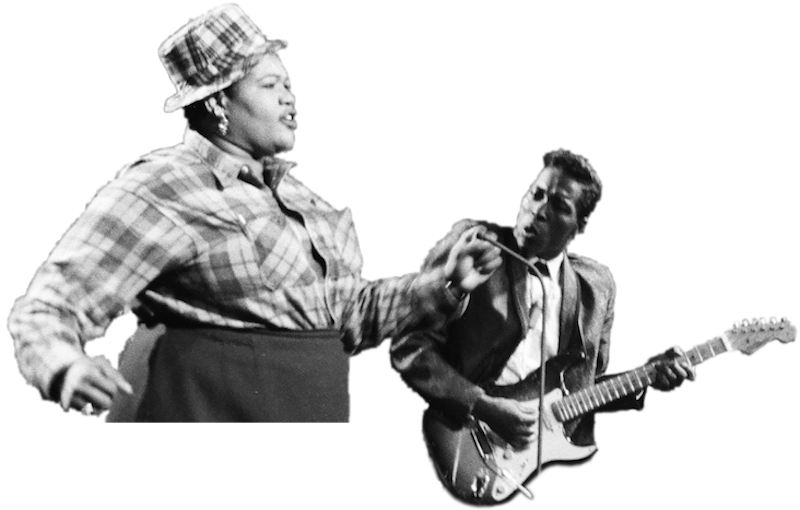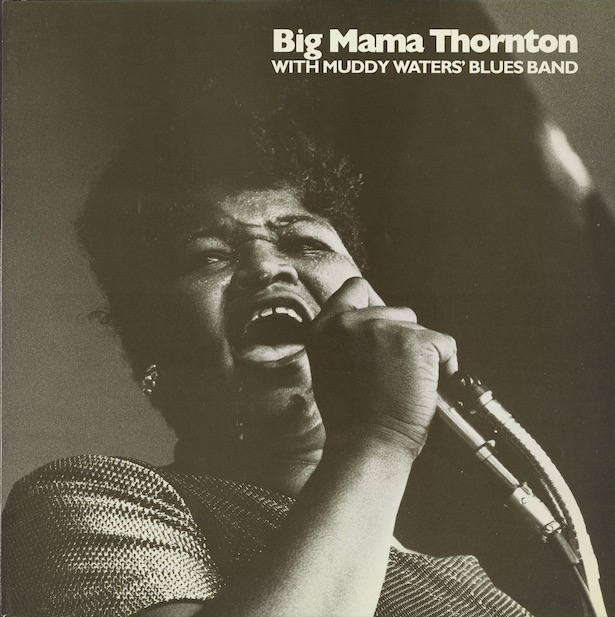Groundbreakers
Groundbreakers
Innovation. Courage. Perseverance. Countless women musicians have broken new ground in their careers, expanding opportunities for themselves and paving the way for others. From being “first” in their field to serving as a voice of their people, groundbreaking women made music history.
Big Mama Thornton and Buddy Guy, 1965
Photo by Chris Strachwitz
© Arhoolie Foundation
Shaping Genres: Country, Folk, and Bluegrass
Women have always had an important place in country, folk, and bluegrass music, even if their work has not always been elevated. As recently as 2019, researchers at the University of Southern California found that women comprised just 10 percent of charting artists on country radio, due in part to the predominance of male disc jockeys. However, women’s rich contributions have shaped, and continue to define, these musical genres across generations.
Kitty Wells, “The Queen of Country Music”
In the 1950s, many country songs blamed women for the demise of relationships, but Wells (1918–2012) flipped the script with her recording of “It Wasn’t God Who Made Honky Tonk Angels.” The 1952 hit, written by J.D. Miller and recorded for Decca, was a lyrical response to Hank Thompson’s “The Wild Side of Life.” Initially banned by some radio stations, it quickly topped the country chart—a first for a solo woman artist—making Wells into a country music superstar.
Elizabeth "Libba" Cotten
Best known for her song "Freight Train," Cotten (1895–1987) built her musical legacy on a firm foundation of late 19th- and early 20th-century African American instrumental traditions. A self-taught guitarist, the left-handed Cotten played a right-handed guitar “upside down.” Her fingerpicking technique was innovative and continues to be referred to as the “Cotten” style.
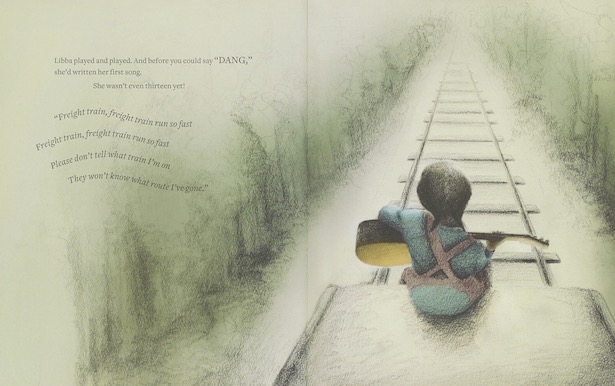
Libba: The Magnificent Musical Life of Elizabeth Cotten
Laura Viers
San Francisco, 2018
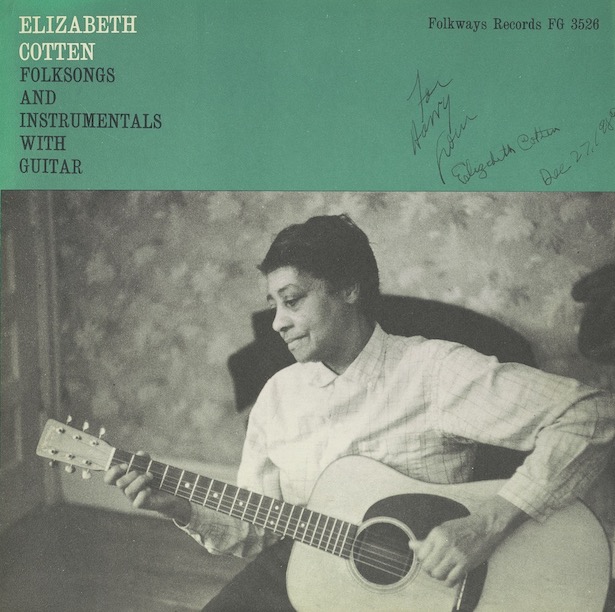
Elizabeth “Libba” Cotten
Elizabeth Cotten: Folksongs and Instrumentals with Guitar
Folkways Records, 1958
Hazel Dickens and Alice Gerrard
Hazel Dickens and Alice Gerrard were among the earliest women to front a bluegrass band. Their groundbreaking work went on to inspire generations of women performers.
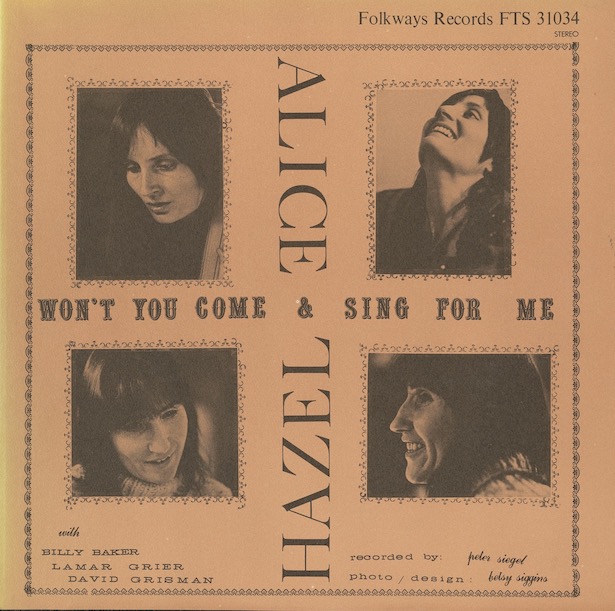
Hazel Dickens and Alice Gerrard
Won’t You Come & Sing for Me?
Folkways Records, 1973
Instrumentalists and Composers
For much of American history, women musicians have primarily achieved distinction as vocalists. Women instrumentalists and composers, while perhaps less prominent, have been foundational figures of rock 'n' roll, jazz, and other genres. These artists have made lasting contributions that influence many generations of musicians.
Liliʻuokalani, Queen of Hawaiʻi
Lydia Liliʻu Loloku Walania Kamakaʻeha (1838–1917), known better as Queen Liliʻuokalani, was the last sovereign monarch of Hawaiʻi. In addition to her savvy political skills, she was a gifted musician and composer. Best known for her song “Aloha ‘Oe” (Farewell to Thee), her compositions inspired, and continue to inspire, Kānaka Maoli (Native Hawaiians).
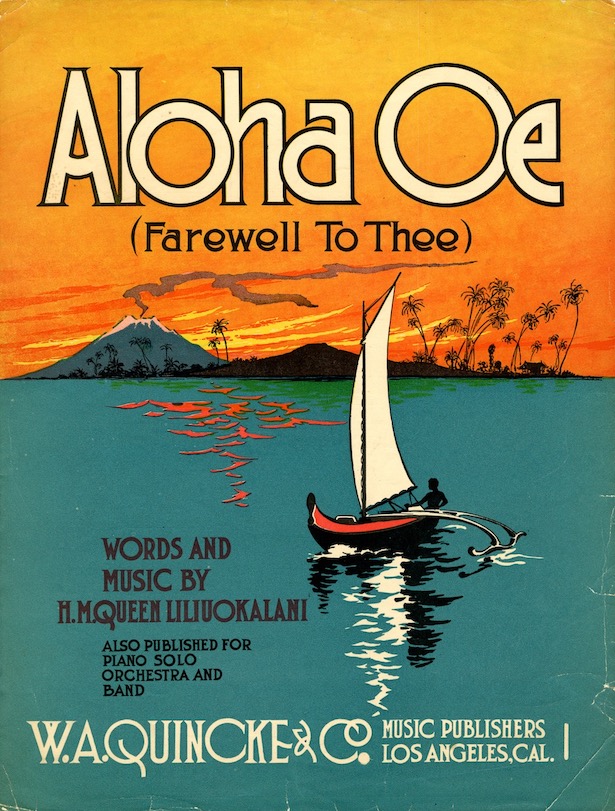
Queen Liliʻuokalani
“Aloha ʻOe” (Farewell to Thee)
Los Angeles, 1912
Sam DeVincent Collection, Archives Center, National Museum of American History
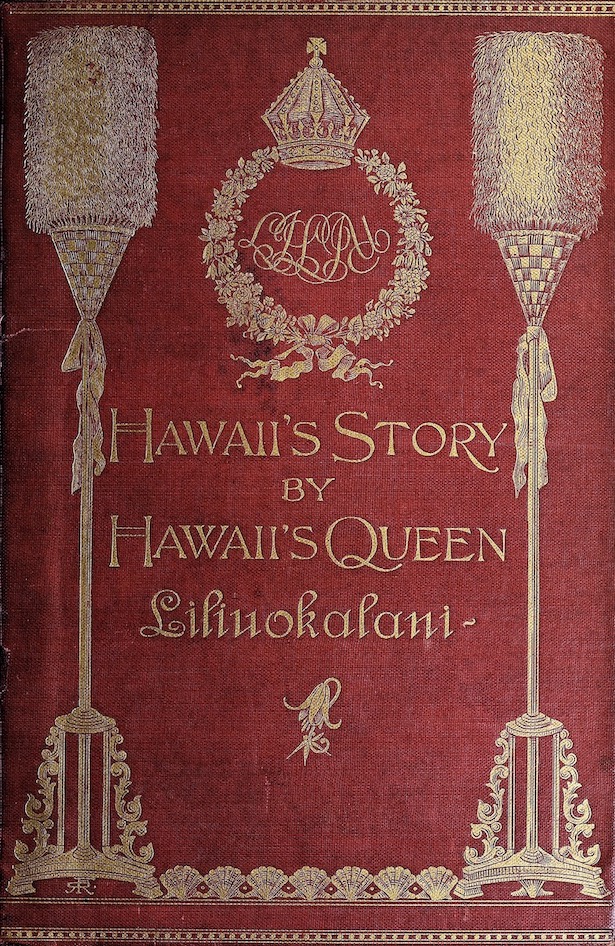
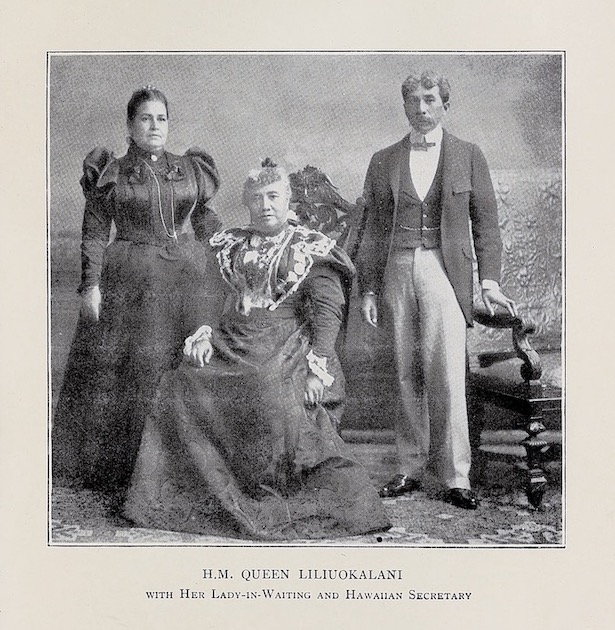
Hawaii's Story, by Hawaii's Queen
Queen Liliʻuokalani
Boston, 1898
Hawaii’s Story was published by the queen in 1898, five years after U.S.-backed forces overthrew the Hawaiian Kingdom.
International Sweethearts of Rhythm
America’s first racially integrated all-female jazz band to tour nationally rose to prominence during World War II, when many male jazz musicians were serving overseas. A band with diverse racial backgrounds—Black, White, Latina, Asian—was unique for the time period. One of their strategies for enduring travel in the Jim Crow South was to sleep and eat on the tour bus rather than patronize segregated facilities.

Swing Sisters: The Story of the International Sweethearts of Rhythm
Karen Deans
Illustrated by Joe Cepeda
New York, 2015
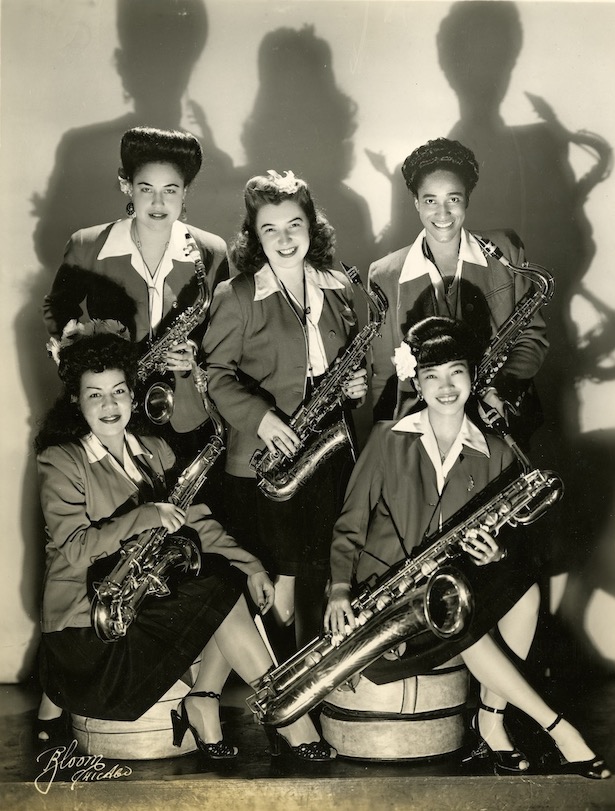
International Sweethearts of Rhythm saxophone section, 1944
International Sweethearts of Rhythm Collection, Archives Center, National Museum of American History
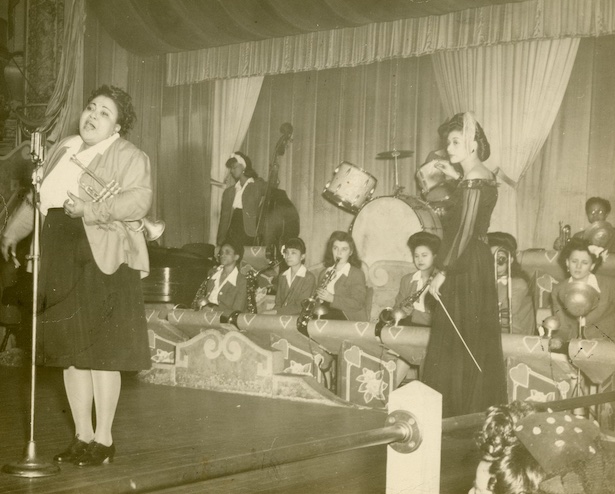
International Sweethearts of Rhythm
Tiny Davis (left, with trumpet) singing, Ana Mae Winston (right) conducting.
St. Louis, Missouri, 1944
International Sweethearts of Rhythm Collection, Archives Center, National Museum of American History
Zitkala-Ša
Musician, educator, and Indigenous rights activist Zitkala-Ša (Red Bird) (1876–1938), composed one of the first Native American operas, The Sun Dance Opera, in 1913. She was of Yankton Dakota and European descent.
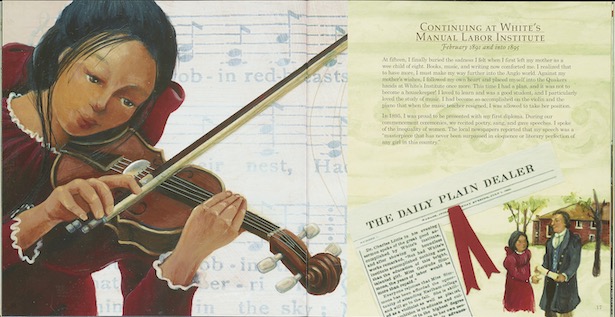
Red Bird Sings: The Story of Zitkala-Ša, Native American Author, Musician, and Activist
Gina Capaldi and Q. L. Pearce
Minneapolis, 2011
Big Mama Thornton
Willie Mae “Big Mama” Thornton (1926–1984) was a blues pioneer and harmonica virtuoso. In 1952 she was the first to record the rock and roll staple “Hound Dog.” She was inducted into the Blues Hall of Fame in 1984.


